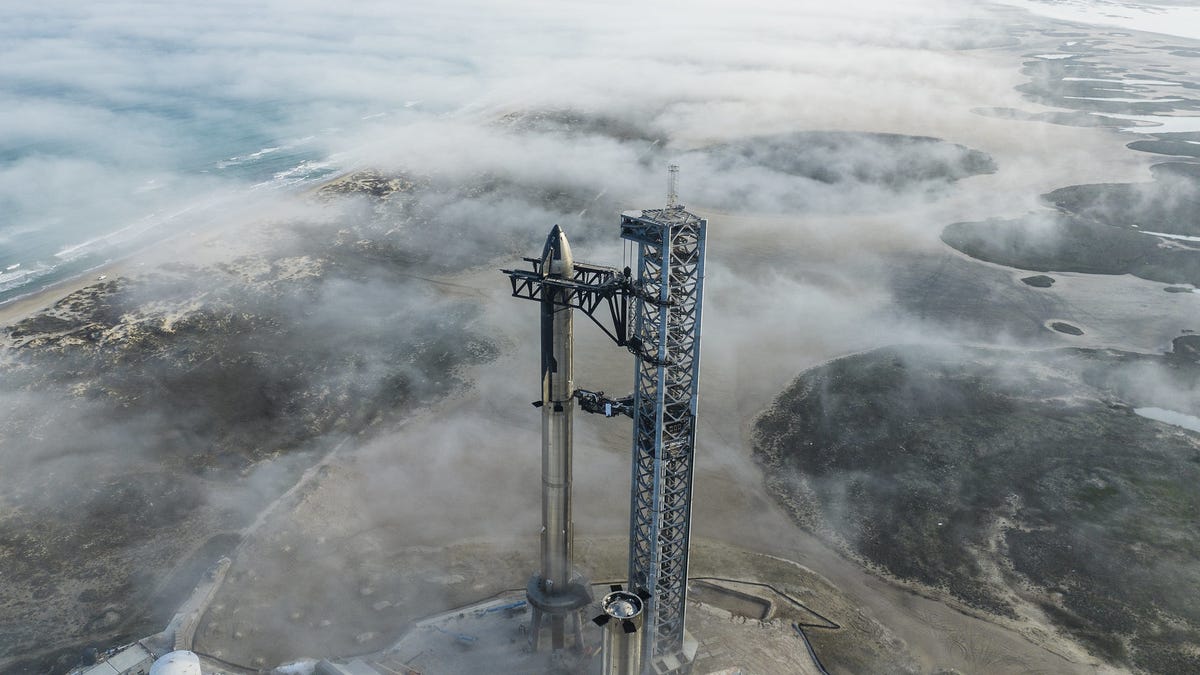SpaceX Fires Up Almost All Engines on Its Mega Starship Rocket in Key Test
The Super Heavy booster, designed to get Starship to orbit, ignited 31 out of 33 engines in Texas on Thursday.

A magical, misty moment in Texas as Starship poses on the launchpad in January 2023.
It wasn't full power, but Elon Musk says it's enough to get to orbit.
That's what the SpaceX founder and CEO said after Booster 7, a prototype of the company's next generation Super Heavy rocket booster, sent fire flying out of its backside at Starbase in Texas.
Super Heavy and its 33 Raptor engines are designed to lift Starship, the company's vehicle for carrying humans to the moon and Mars, into space. At full thrust, the final version of the rocket is expected to be the most powerful in history.
Thursday afternoon, all but two of those engines fired briefly during a hold-down static fire test.
"Team turned off 1 engine just before start & 1 stopped itself, so 31 engines fired overall," Musk wrote on Twitter. "But still enough engines to reach orbit!"
Team turned off 1 engine just before start & 1 stopped itself, so 31 engines fired overall.
— Elon Musk (@elonmusk) February 9, 2023
But still enough engines to reach orbit! https://t.co/QYx3oVM4Gw
SpaceX conducted test firings of the Super Heavy prototype dubbed Booster 7 last year, but only with a fraction of the engines it's designed to carry.
Last month, the company completed the vehicle's first full "wet dress rehearsal," which means SpaceX loaded propellant into the rocket and ran through the countdown, simulating everything right up through blastoff without actually lighting up the engines.
SpaceX is getting near the end of its checklist of things that need to happen before the Federal Aviation Administration issues the company a license to launch, perhaps as soon as next month. The company will now review data from the test, and we'll have to wait to see if another test firing is required.
Starship last flew in 2021 in a series of high-altitude flights that saw early prototypes of the craft, sans Super Heavy booster, skim the atmosphere and come back for a landing attempt. The next launch will be an orbital flight that sees Super Heavy launch Starship to orbit before separating and splashing down in the Gulf of Mexico. SpaceX has also mentioned the possibility of landing on a modified oil rig or using large mechanical arms on the launch tower to "catch" the returning rocket.
Meanwhile, Starship will continue on to orbit for a short trip to space before splashing down off the coast of Hawaii.
If all goes well, 2023 will see more Starship tests as SpaceX prepares to assist NASA and its Artemis program by eventually sending cargo and astronauts to the moon later this decade.

